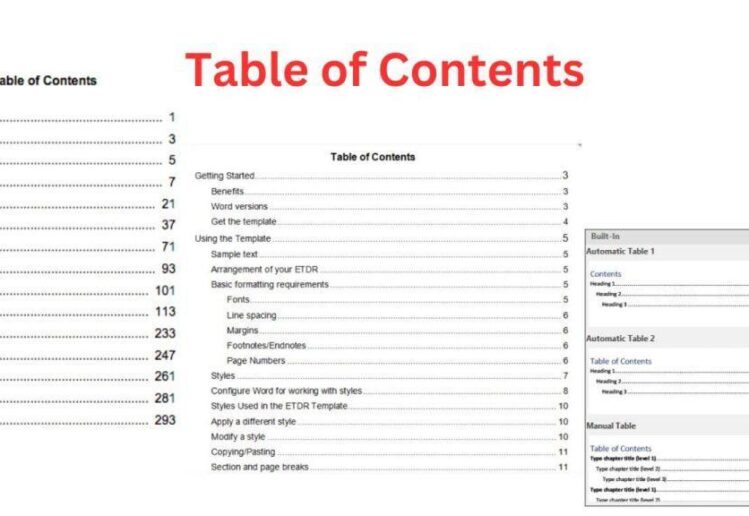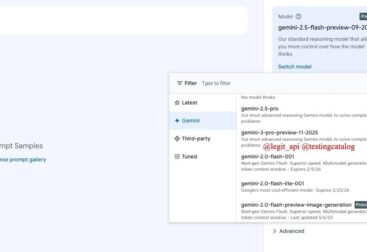English content formatting shapes how readers move from headline to key takeaways, making your web copy more scannable and engaging. By applying content formatting tips, you guide readers through structured sections, concise summaries, and clear call-to-action lines. This approach helps produce publication-ready content that is coherent, accessible, and ready for editorial review. Attention to typography, bullet lists, and metadata also boosts search visibility and audience retention, while aligning with English content editing standards. In short, thoughtful formatting is not just decoration but a strategic tool for clearer communication and stronger impact.
From another angle, you can frame this idea with terms like text layout and document presentation, which serve the same purpose of guiding readers. You might describe it as readability-focused formatting or online publication readiness, where structure, spacing, and headings support comprehension. LSI-friendly phrasing also uses related concepts such as typography, metadata optimization, and structured content to reinforce the central theme. By weaving synonyms like layout design, editorial workflow, and web-ready copy, the message stays clear while appealing to both people and search engines.
Subheading 1: Enhancing Readability through Structural Content Formatting
Effective content formatting is not mere decoration; it shapes how readers absorb information. By using clear headings, concise paragraphs, and deliberate white space, you guide attention and reduce cognitive load. Employing content formatting tips such as consistent font choices, short sentences, and strategic emphasis helps readers skim for key ideas and retain details.
The base content you provided is already in English, so the first step is to structure it for scanability. Start with a strong lead, then split complex ideas into segments where appropriate, followed by supporting sentences. Consistency in headings and paragraph lengths across the document signals professionalism and improves reader engagement.
Subheading 2: The Role of a Summary of Key Points in Effective Writing
A well-crafted summary of key points serves as a quick reference for readers who may only glance at the page. It distills the main arguments, data, and conclusions into a compact form, enhancing retention and clarity. Integrating a precise summary early in the document helps set expectations and frames the rest of the content.
When preparing publication-ready content, your summary should reflect the core takeaways, supported by section headings and accessible language. Revisit the summary after editing to ensure it aligns with the revised text, and consider adding a brief takeaway line at the end of each section to reinforce memory.
Subheading 3: Crafting Publication-Ready Content: From Draft to Distribution
Publication-ready content is polished, consistent, and free of distracting errors. It passes through a structured workflow: draft, edit, format, review, and final approvals. Each stage tightens language, checks facts, and ensures the piece meets the target publication’s standards.
As you move toward distribution, verify asset readiness—titles, meta descriptions, alt text for imagery, and accessibility considerations. If you have a base draft in English, the final step is ensuring the delivery format matches the platform’s requirements, whether web, print, or multimedia.
Subheading 4: English content formatting: Tools, Styles, and Consistency
English content formatting demands a reliable set of tools, styles, and routines. Use a style guide (APA, Chicago, or in-house) to govern headings, citations, capitalization, and punctuation. Consistency in formatting reduces reader friction and strengthens authority.
In practice, apply templates for headings, paragraph spacing, and list formatting, then audit the document for deviations. The goal is a coherent, publication-ready appearance that remains accessible across devices and audiences.
Subheading 5: English Content Editing: A Structured Approach to Perfection
English content editing is more than connecting sentences; it’s aligning structure, voice, and accuracy with the reader’s needs. Start with a macro edit to confirm purpose, audience, and flow, then perform micro edits to refine grammar, word choice, and rhythm.
Use editing checklists and style sheets to standardize terms and avoid inconsistencies. After editing, re-check formatting and citations to ensure alignment with the target platform’s conventions and expectations.
Subheading 6: Editorial Workflows for Efficient Editing and Formatting
A robust editorial workflow accelerates production without sacrificing quality. Move from draft to development cut, to line edits, to formatting pass, and finally to quality assurance. Clear ownership and version control prevent rework and confusion.
Leverage collaboration tools and review cycles to gather feedback efficiently. When multiple editors contribute, a shared glossary and consistent guidelines help harmonize voice and terminology across the piece.
Subheading 7: Aligning Tone, Voice, and Style Across English Content
Consistency in tone, voice, and style ensures that readers experience a unified message. Define the target audience and choose a voice that matches their expectations, whether formal, casual, or technical. Document these decisions in a style guide for ongoing reference.
Regularly audit content against the style guide and provide constructive feedback to contributors. Even small deviations can accumulate and alter perception, so timely corrections are essential for long-term coherence.
Subheading 8: Optimizing for Readability: Typography, Spacing, and Layout
Readability hinges on typography and layout choices that reduce effort for the eye and brain. Favor legible fonts, comfortable line lengths, and appropriate contrast. Adequate line spacing and margins also improve comprehension and retention.
Layout decisions should support your content priorities, not hinder them. Use visual anchors like subheadings, pull quotes, and imagery to break up text and guide readers through the narrative.
Subheading 9: Leveraging Content Formatting Tips for SEO-Friendly Subheads
SEO-friendly subheads improve search visibility and user experience by signaling structure to crawlers and readers alike. Incorporate relevant keywords naturally while preserving clarity and flow. Use descriptive subheads that reflect the content that follows.
Beyond keyword use, ensure subheads are scannable and varied in length. This aligns with content formatting tips and enhances the likelihood of getting featured snippets and higher engagement rates.
Subheading 10: Quality Assurance: Grammar, Punctuation, and Style Checks
Quality assurance combines automated tools with human oversight. Run spell and grammar checks, verify punctuation accuracy, and ensure consistent hyphenation and capitalization. Tools can catch obvious errors, but human review catches context and nuance.
A final read-through focusing on style, rhythm, and tone helps maintain professionalism. Pair checks with a metadata review—titles, summaries, and accessibility tags—to ensure comprehensive quality.
Subheading 11: Feedback and Revisions: Iterative Improvement for Publication-Ready Content
Feedback loops are essential for refining content toward publication-ready quality. Collect input from editors, subject matter experts, and potential readers, then categorize notes by severity and impact.
Implement revisions in iterations, validating each change against the original purpose and audience needs. This disciplined approach reduces drift and ensures the final piece delivers on its promises.
Subheading 12: Final Checklist: Ensuring Publication-Ready Content Before Release
Before release, run a final checklist that covers purpose, audience alignment, accuracy, formatting, accessibility, and metadata. A structured checklist helps avoid last-minute oversights.
Publishers often rely on a reproducible process so teams can validate content quickly. Include a quick sanity check for the publication platform, verify links and images, and confirm that all formatting and editing tasks are complete.
Frequently Asked Questions
What is English content formatting and how do content formatting tips improve readability?
English content formatting defines how text is structured and presented. Following content formatting tips—such as using clear headings, short paragraphs, bullet lists, ample white space, accessible typography, and descriptive alt text—improves readability, scanning efficiency, and accessibility while supporting SEO.
How can I convert a plain English draft into publication-ready content using English content formatting guidelines?
To create publication-ready content, apply English content formatting guidelines: outline the structure, use descriptive headings (H1/H2), write concise paragraphs, format lists, include metadata and citations, maintain consistent style and terminology, and proofread for grammar, tone, and consistency.
What is a summary of key points in English content formatting, and how can I present it clearly?
A summary of key points in English content formatting distills the main ideas for quick reference. Present it as a concise bullet list at the top or as an executive summary, using bold for emphasis and a clean layout to aid skimming.
Why is English content editing important for SEO and readability, and how do I perform effective English content editing?
English content editing improves grammar, consistency, tone, and factual accuracy, boosting readability and search performance. Effective editing includes tightening sentences, standardizing terminology, checking facts, aligning with a style guide, and preserving meaning while adapting for the target audience.
What are best practices for formatting headings, lists, and emphasis to optimize English content formatting?
Best practices include using a clear heading hierarchy (H1, H2, H3), writing short, scannable paragraphs, employing bullet or numbered lists for clarity, and using bold or italics sparingly to highlight key terms. Maintain consistent spacing and avoid over-formatting to keep the content readable and SEO-friendly.
How can I balance keyword density with Latent Semantic Indexing (LSI) while maintaining publication-ready content and good English content editing?
Balance keyword density by focusing on semantic relevance: include related terms and phrases (LSI keywords) such as ‘publication-ready content’, ‘content formatting tips’, and ‘English content editing’ naturally within well-written text. Avoid keyword stuffing; prioritize readability and human intent, then verify with SEO tools to ensure appropriate density.
| Aspect | Details |
|---|---|
| Language status | The content is already in English; no translation is needed. |
| Available actions | I can format it, summarize key points, or prepare a publication-ready version. |
| Purpose | This table highlights key points about the base content and guides how to present it in English. |
| Next steps | Tell me which task you want (formatting, summary, or publication-ready draft). |
Summary
English content formatting is straightforward when the base text is already in English. For SEO-friendly results, structure the content with clear headings, concise summaries, and the phrase ‘English content formatting’ used strategically throughout the text to enhance search visibility.











